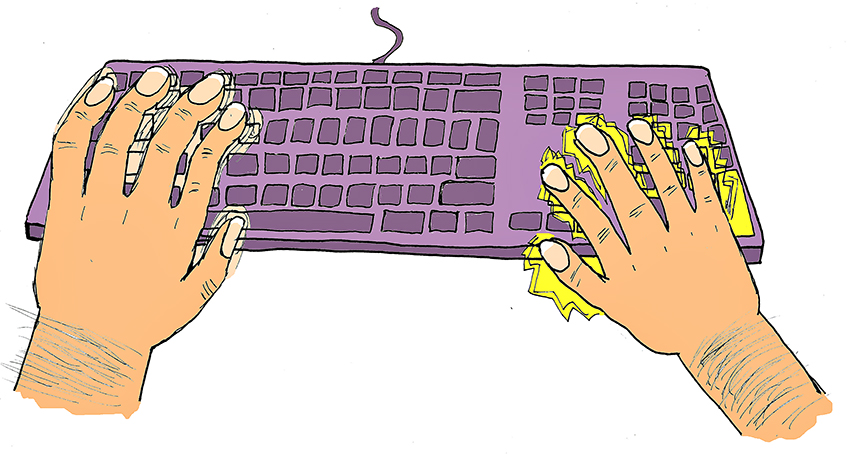Words per minute is not the only thing researchers can tell from a keyboarding test.
UT scientists are analyzing typing patterns to diagnose patients with neurodegenerative diseases, such as Parkinson’s.
Neuroscience adjuct assistant professor Diane Whitmer has developed an algorithm to track typing patterns, paying close attention to factors such as speed and positioning. Because many people who have Parkinson’s fatigue more easily than their healthy counterparts, these patients’ typing gets much more erratic over time.
Whitmer and her colleagues have two main research goals. They hope to perfect their quantitative method for detecting Parkinson’s from typing patterns and to correlate those patterns with the severity of the disease.
“What we have found to be most predictive in differentiating between Parkinson’s and the control group is really the variability in how long the keys are held down over a course of time,” Whitmer said.
Researchers found that the difference in speed between the two hands was another telling factor in detecting Parkinson’s, according Matthew Cowperthwaite, director of research at the St. David’s Neuroscience and Spine Institute.
“That sort of asymmetry is one of the types of patterns that underlines Parkinson’s disease,” Cowperthwaite said.
To detect these patterns, Whitmer and her colleagues are using a technology that records keyboarding movements with sub-millisecond precision.
“With the right tools and data, we can target things many people don’t even consider a disease, such as a specific emotional state, like anxiety,” Cowperthwaite said.
Whitmer said this technique may eventually diagnose nearly every neurological disease, including depression and Alzheimer’s. She hopes that in a later stage of development, their keyboarding analysis will not only function as a diagnostic tool, but also as a clinical assessment tool, which could tell neurologists how a disease is progressing.
Whitmer said she was inspired by the security and privacy industry, which has been analyzing typing patterns for decades to identify individuals. Now her research has brought it into the healthcare field.
The researchers are now waiting for their results to be peer reviewed as they work on starting their company, TyPos. Cowperthwaite said they hope to have the company up and running within the next three to six months.
“I think the final results are going to be really interesting,” Cowperthwaite said, “It’s going to position us to look at a lot more diseases and work on consumer applications.”
This article has been updated since its initial publication to reflect Matthew Cowperthwaite's correct affiliation.















